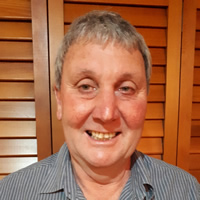Presented at NZ Hydrological Society Technical Workshop 17-20 March 2020
Abstract
History: Environment Canterbury runs a network of 160 water level/flow recorders throughout the region these are represented by three main types of rivers; Alpine Rivers, Foothill Rivers and Springfed Streams.
The Selwyn River is a typical foothills river that flows across the Canterbury Plains to the south of Christchurch and the river where this presentation will concentrate on.
The Selwyn River has three water level recorders along its reach, Selwyn River @ Coes Ford is at the lower end of the catchment and the site that is of most interest for both low flow and flood analysis.
The site commenced in 1954 and records show significant events where the stage exceeded 8m in 1994, 2000, 2002, 2008 and 2017 note the stopbank is at 8.5m. Gaugings were done during the 1994, 2002 and the 2017 events the first two 5kms downstream due to the technology available at the time.
The results from the first two gaugings were transferred up to the recorder site using a velocity/area relationship. During this period our flood hazard engineers developed a flood model for the river, which was different from our extrapolated flow. We had many discussions about the difference but no resolution.
At the 2017 event we had new technology (ADCP and jetboat and ADCP and QBoat) that gave the opportunity to measure these higher flows and determine the flow when the river was bank full.
Conclusions: The results from our physical measurements and the estimate from the flood model both agreed within the uncertainties of both measurement. The learnings for me was that we should use all the tools in your toolbox to better determine/verify results.
The presentation will outline the calculations and extrapolations to obtain our initial flow and then the physical gaugings and the resulting changes and reasons why we got it so wrong initially.
Author bio
 Phil is currently employed at Environment Canterbury as a Principal Science Technician.
Phil is currently employed at Environment Canterbury as a Principal Science Technician.
He manages the Environment Canterbury surface water hydrology network which comprises of 155 water level/flow sites, 82 rainfall sites and 6 water quality sites measuring multiple parameters in a challenging environment.
The flood rainfall network system is situated on the main divide of the South Island at an altitude of about 1600 with an annual rainfall of 5000 mm and Alpine River systems that have time of travel of about 8 – 12 hours makes response times to get good flood information difficult. In addition to the flood network there is a network of compliance sites to monitor water takes. Currently this network consists of 1500 low flow gauging sites that are correlated to primary flow sites.
He has been with Environment Canterbury for over 30 years with the last 25 years in hydrology and experienced some significant changes in technology in this field.
The greatest changes include the measurement and recording of data and the new processing packages that are available, all of these making hydrology data more robust. The one thing we should not loose site of is that all this new technology still relies on the first principals of hydrology and hydraulics.
Presentation
To watch the video, you will need your AHA member password sent to members by email

